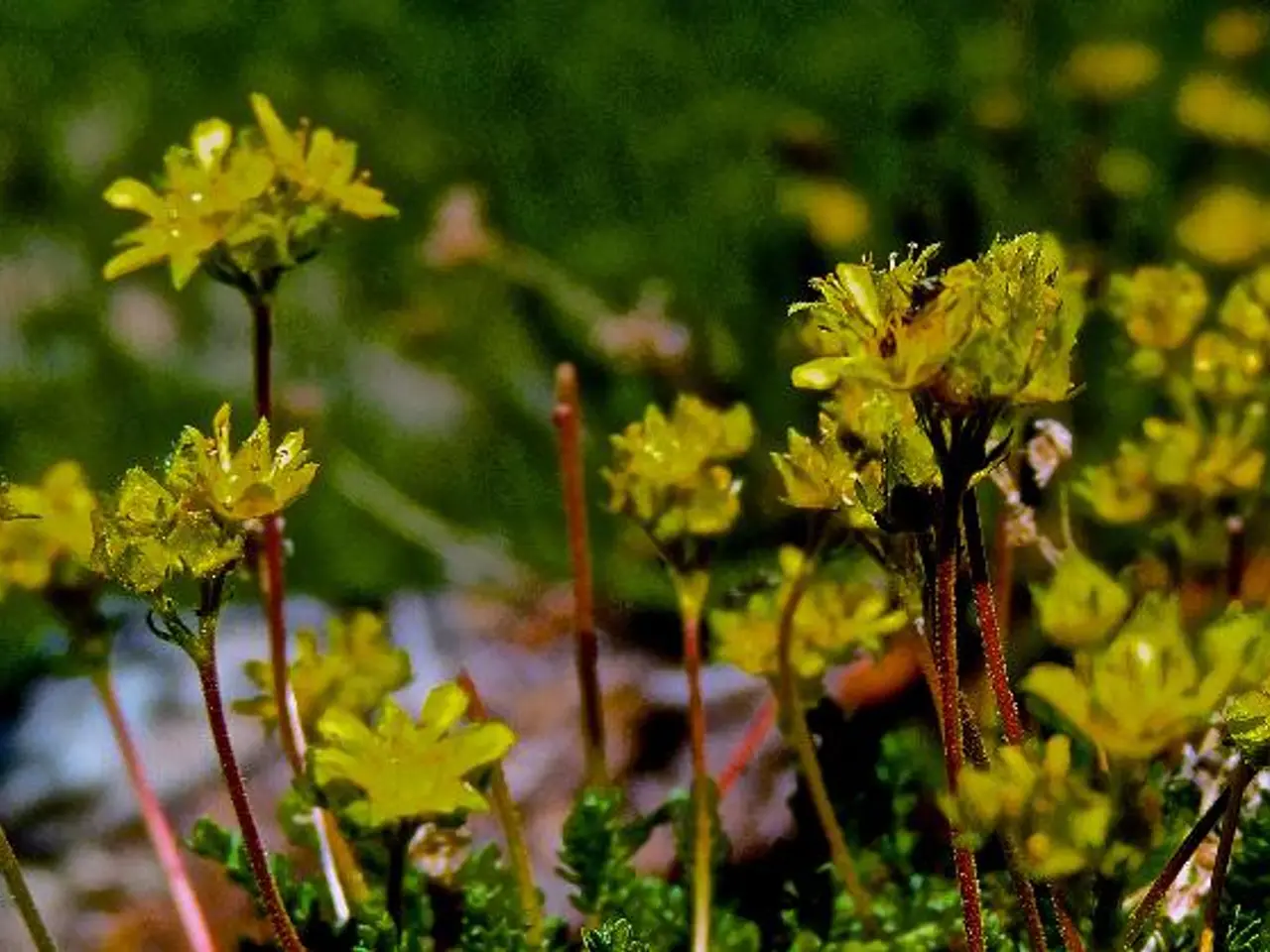"Instantly, remove everything from the plant root"
In the world of gardening, the yellow clover might seem like an innocuous addition to any green space. However, this unassuming plant is causing concern among hobby gardeners due to its invasive nature.
The yellow clover, often identified as either Clover broomrape (Orobanche minor) or Bur clover (Medicago polymorpha), is a persistent and rapidly spreading plant that can drive out other plants in gardens. Its small yellow flowers and reddish leaves grow densely close to the ground, making it easily overlooked.
Clover broomrape (Orobanche minor) is a parasitic plant that attaches to hosts in the pea and daisy families, extracting nutrients through specialized structures called haustoria. It can vary in color, including yellow, and grows up to 0.5 meters tall. Established in grasslands and pastures, it can be invasive in some areas.
On the other hand, Bur clover (Medicago polymorpha) has small yellow flowers and serrated trifoliate leaves with spiky stipules. It is a nitrogen-fixing legume but can spread aggressively and invade gardens and lawns.
A related invasive species, commonly called yellow sweet clover (Melilotus officinalis), can also crowd out native vegetation and degrade habitats.
Invasive plants are not always recognized as problems until it is practically too late. They thrive due to climate change and can cause immense consequences if not removed. In the case of the yellow clover, even when above-ground parts dry up in extreme heat, the roots remain undamaged and sprout again with rain.
Quick action is necessary when dealing with the yellow clover. Effective removal strategies include physical removal, cultural practices, and environmentally-friendly methods. Hand-pulling young seedlings before they establish deep roots is crucial. For mature plants, cutting or snipping off flowers and seed heads to prevent reproduction is recommended.
Maintaining a healthy, dense garden through proper watering, pruning, spacing to improve airflow, and avoiding overfertilization reduces invasiveness by promoting strong desirable plants that compete effectively. Using tarps to smother infestations, regular snipping to weaken plants, and removal by hand when feasible are also effective methods.
However, it's important to note that chemical controls should be used sparingly and only when necessary, as they can harm pollinators and other beneficial organisms. For Clover broomrape, preventing its host plants from growing near vulnerable garden plants can reduce infestation risk.
In summary, the yellow clover's invasiveness pertains mainly to species like Orobanche minor and Medicago polymorpha, and effective control relies on early detection, physical removal of plants and seed heads, promoting garden health, and careful, limited use of other eradication methods.
It's essential for gardeners to be aware of the potential threats posed by invasive plants like the yellow clover. Invasive plants displace local ecosystem plants and gradually take over, causing problems that may not be immediately apparent. Some plants, even those bought from a garden center, can become invasive. So, it's crucial to research any new additions to your garden and monitor their growth carefully.
The yellow clover, particularly Orobanche minor and Medicago polymorpha, can cause concern in home-and-garden settings as it tends to crowd out other plants due to its invasive nature. To maintain a diverse and healthy other lifestyle in your garden, it's essential to be alert for invasive plants like the yellow clover, research new additions carefully, and monitor their growth carefully to prevent them from displacing native species.




